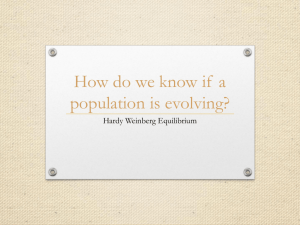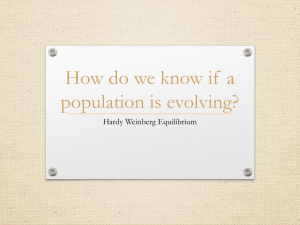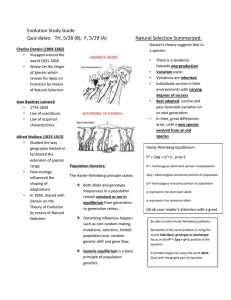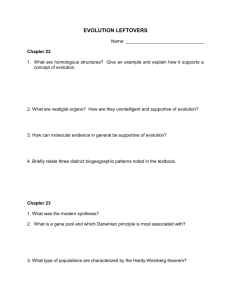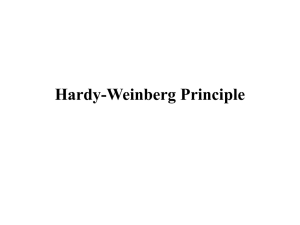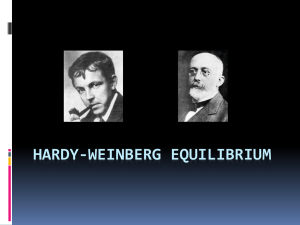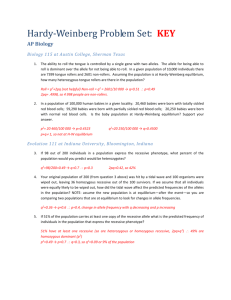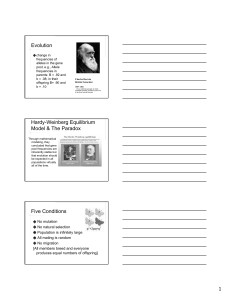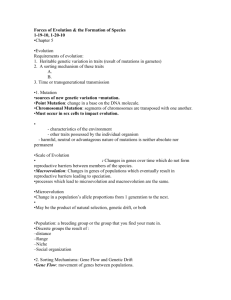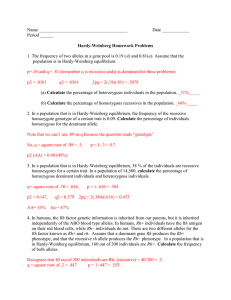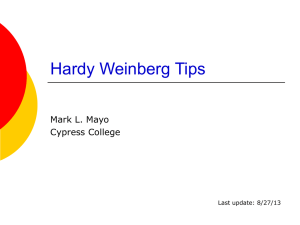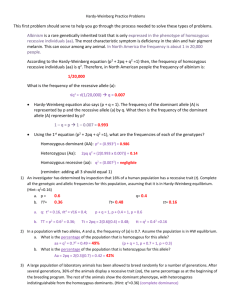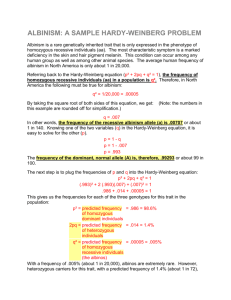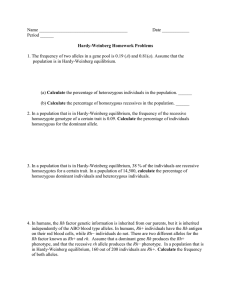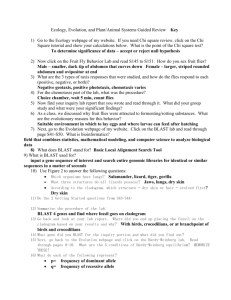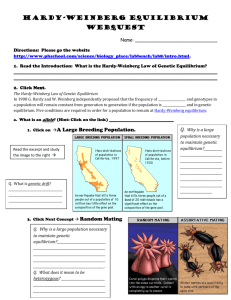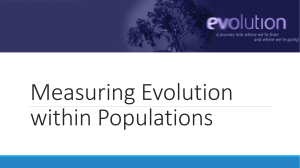Name Period ______ Date Hardy Weinberg Equilibrium How can a
advertisement
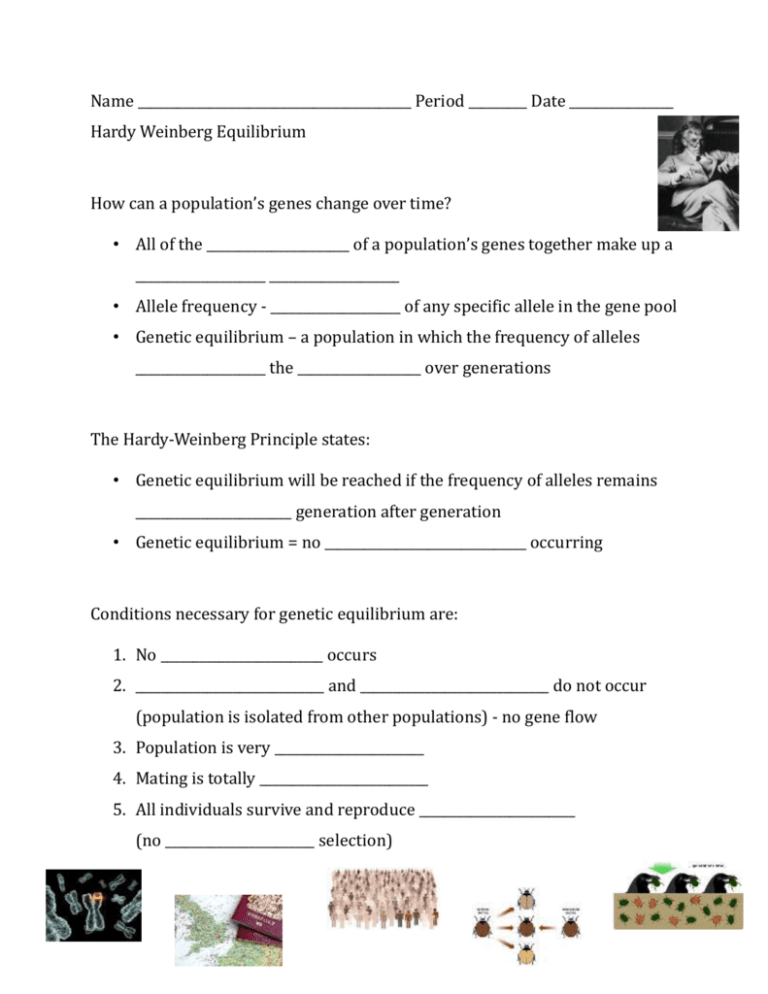
Name __________________________________________ Period _________ Date ________________ Hardy Weinberg Equilibrium How can a population’s genes change over time? • All of the ______________________ of a population’s genes together make up a ____________________ ____________________ • Allele frequency - ____________________ of any specific allele in the gene pool • Genetic equilibrium – a population in which the frequency of alleles ____________________ the ___________________ over generations The Hardy-Weinberg Principle states: • Genetic equilibrium will be reached if the frequency of alleles remains ________________________ generation after generation • Genetic equilibrium = no _______________________________ occurring Conditions necessary for genetic equilibrium are: 1. No _________________________ occurs 2. _____________________________ and _____________________________ do not occur (population is isolated from other populations) - no gene flow 3. Population is very _______________________ 4. Mating is totally __________________________ 5. All individuals survive and reproduce ________________________ (no _______________________ selection) Hardy-Weinberg Principle • It is virtually ____________________________ to meet these conditions • Allelic frequencies do _____________________ in populations, therefore evolution occurs • The main application of this principle is calculating ___________________ and _________________________ frequencies in a population In a population, the sum frequency of alleles will equal 1 • This can be expressed as: • p+q=1 • Where: • p = frequency of the _________________________ ____________________ • q = frequency of ___________________________ ______________________ Hardy-Weinberg Equation 2 2 p + 2pq + q = 1 • Where: 2 • p = frequency of individuals ________________________ __________________ • 2pq = frequency of ___________________________ individuals • q 2= frequency of individuals ________________________ ___________________ 4 simple rules for calculating equations: 1. Find what q2 and q are first • They can be determined with the information given to you in a problem. The q2 population are the homozygous recessive individuals. Once you solve for q2, take the square root to find q 2. Once you find what q is, you subtract that number from 1 • p + q = 1. That will give you p, or the number of dominant alleles in a population 3. Square the p number to solve for p2 • This will give you the number of homozygous dominant individuals in a population. 4. Now that we have p2, p, q2, and q, plug those numbers into the 2pq • Check your work by plugging into each equation and see if they equal 1 Practice Question • If 98 out of 200 individuals in a population express the recessive phenotype, what percent of the population are homozygous dominant? (Recessive phenotype = homozygous genotype q2) p+q=1 q2 = 98 200 q= p= p2 = 2pq = = 0.49 p2 + 2pq + q2 = 1
